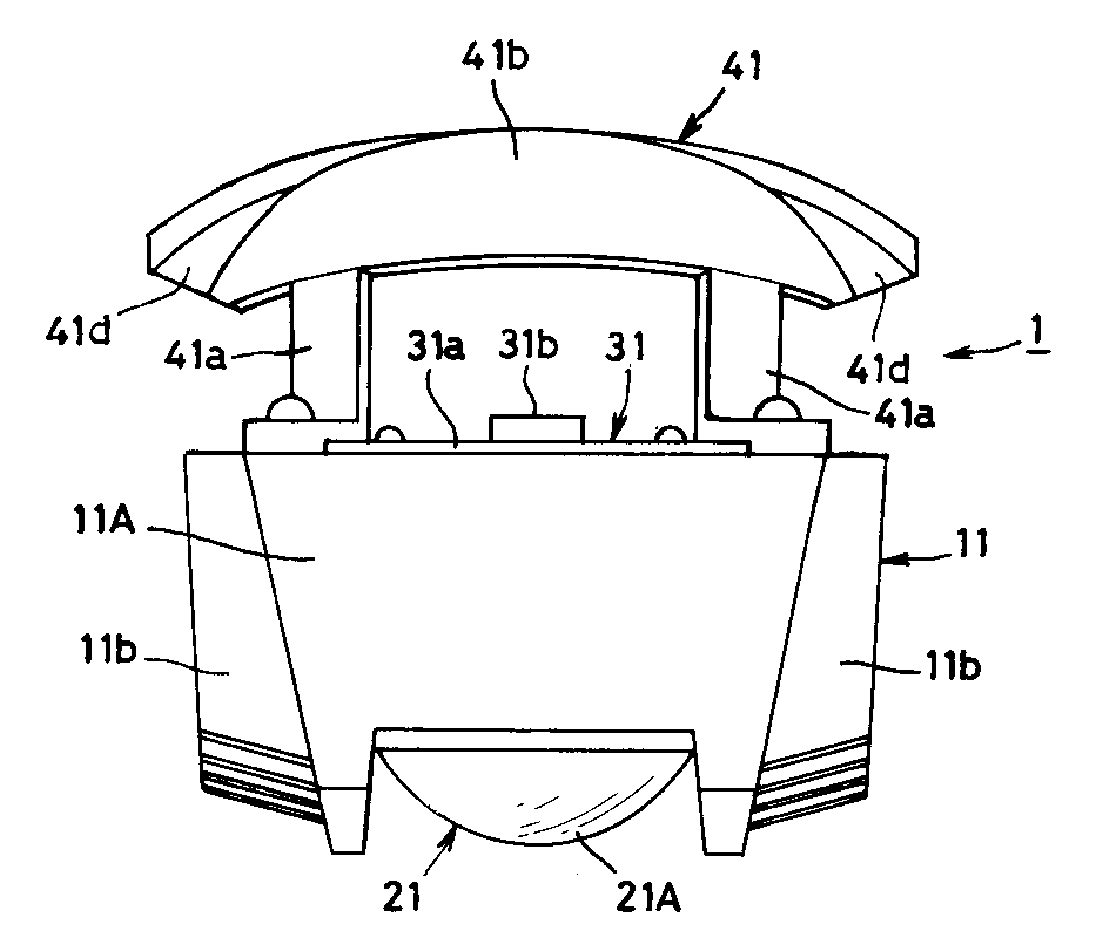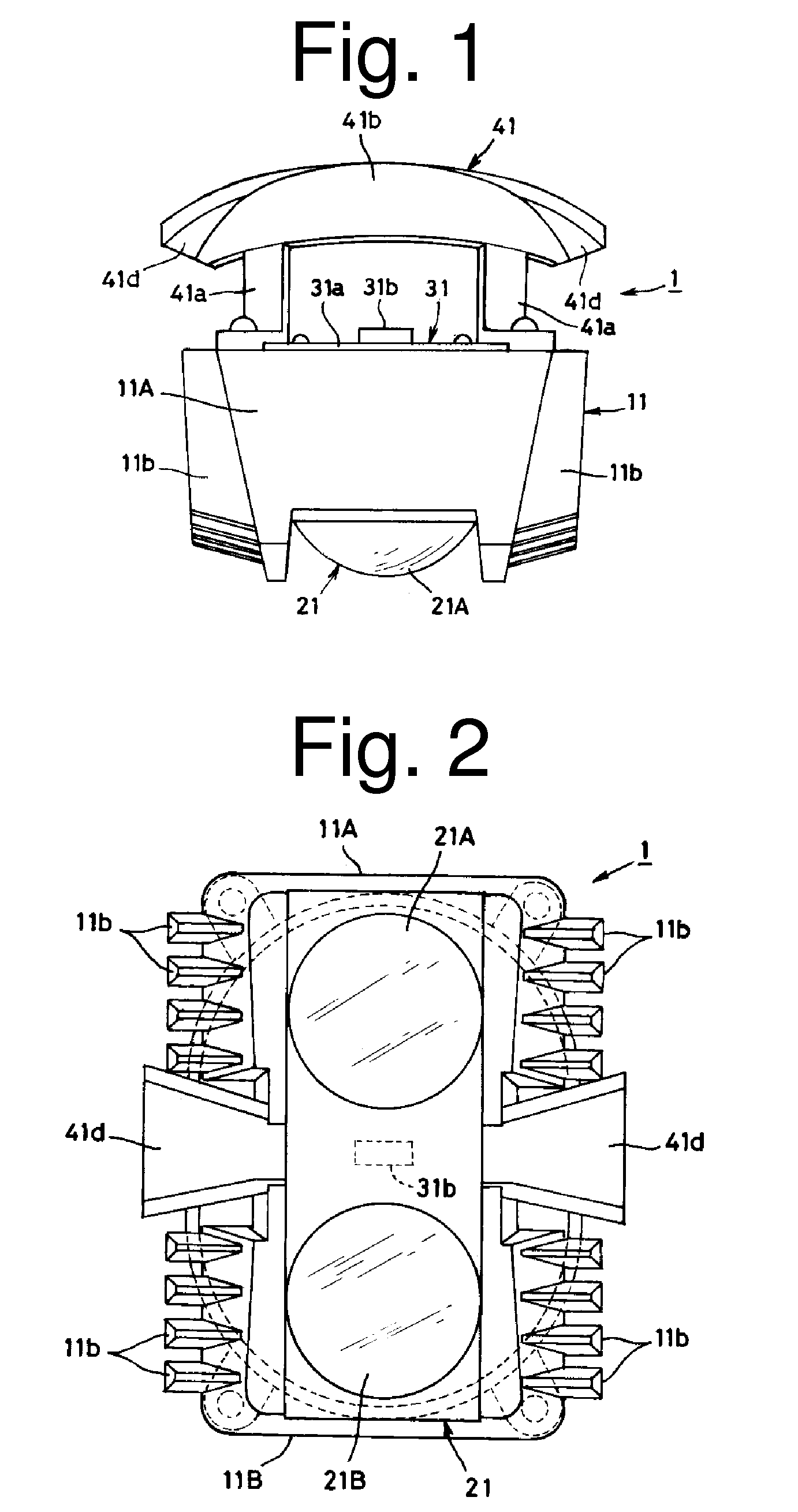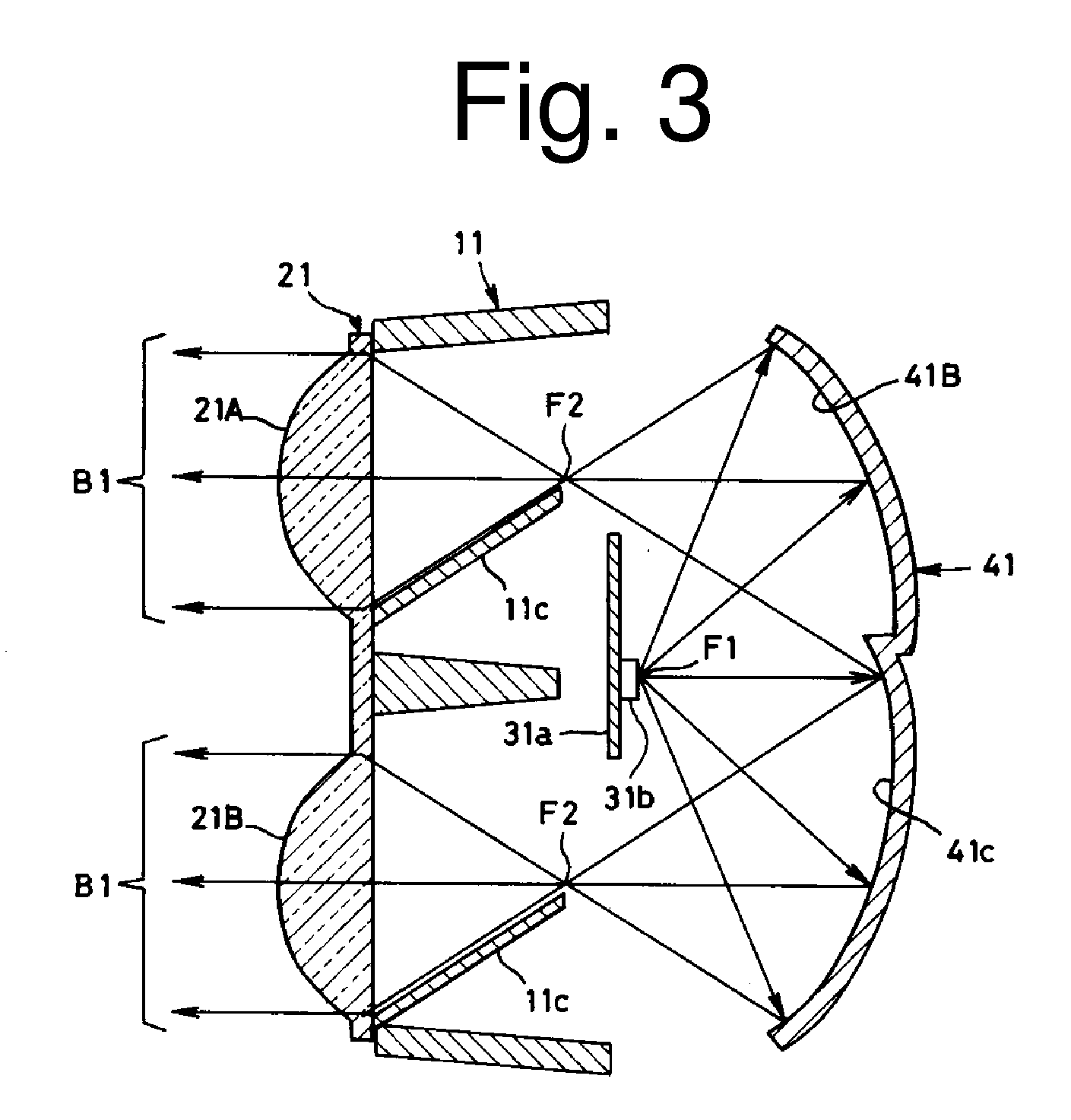Lighting device
a technology of light source and light source, which is applied in the direction of lighting and heating apparatus, semiconductor devices for light sources, and light utilization efficiency deterioration to lower light intensity, and can solve the problems of heat generation that can be significant, difficult and sometimes impossible to obtain sufficient light intensity, and achieves efficient heat dissipation, prolonging service life, and maintaining high light intensity without deterioration of light emission efficiency of the devi
- Summary
- Abstract
- Description
- Claims
- Application Information
AI Technical Summary
Benefits of technology
Problems solved by technology
Method used
Image
Examples
Embodiment Construction
[0029]A description will now be made below with respect to lighting devices of the presently disclosed subject matter with reference to the accompanying drawings and in accordance with exemplary embodiments. In the following exemplary embodiments, the semiconductor light emitting device for use in the lighting device is described as an LED and the lighting device is a projector type vehicle light, as an example. It should be understood, however, that the presently disclosed subject matter is not limited to these concrete examples
[0030]The first exemplary embodiment of the presently disclosed subject matter is a twin beam type vehicle light 1. FIG. 1 is a plan view of the vehicle light 1, FIG. 2 is a front view thereof, FIG. 3 is a schematic cross-sectional view thereof, and FIG. 4 is an exploded perspective view thereof. The vehicle light 1 can include a lens holder 11, a lens unit 21, a light source unit 31, and an elliptic reflector 41.
[0031]The lens holder 11 can be a main compon...
PUM
 Login to View More
Login to View More Abstract
Description
Claims
Application Information
 Login to View More
Login to View More - R&D
- Intellectual Property
- Life Sciences
- Materials
- Tech Scout
- Unparalleled Data Quality
- Higher Quality Content
- 60% Fewer Hallucinations
Browse by: Latest US Patents, China's latest patents, Technical Efficacy Thesaurus, Application Domain, Technology Topic, Popular Technical Reports.
© 2025 PatSnap. All rights reserved.Legal|Privacy policy|Modern Slavery Act Transparency Statement|Sitemap|About US| Contact US: help@patsnap.com



